The Chelsea Flower Show
Patrick O'Keeffe
29 September, 2014
We recently visited the Royal Horticultural Society (RHS) Chelsea Flower Show. This annual event is a must for anyone and everyone who has an interest in or loves anything to do with gardens and flowers.
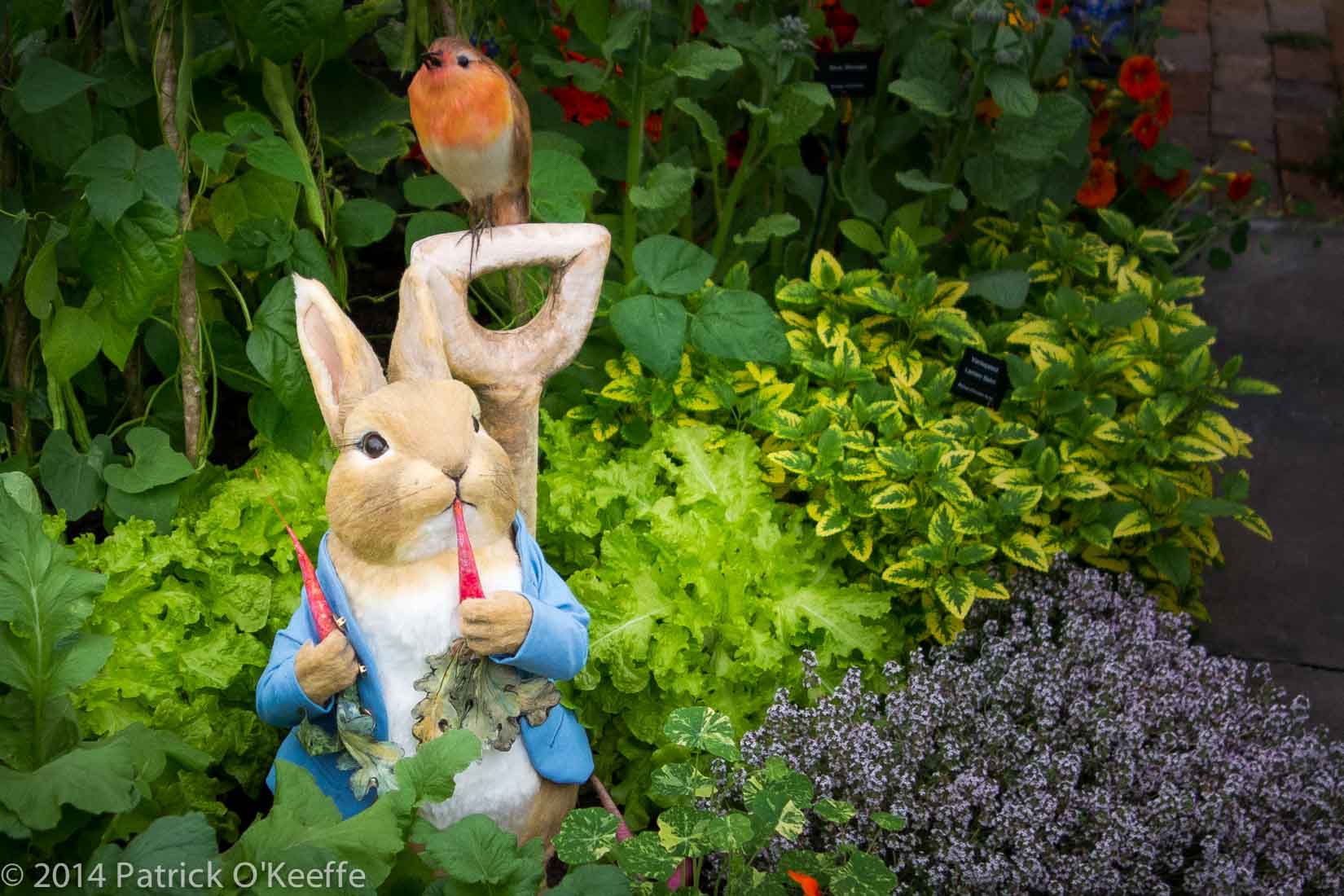
We recently visited the Royal Horticultural Society (RHS) Chelsea Flower Show. This annual event is a must for anyone and everyone who has an interest in or loves anything to do with gardens and flowers.

It is the most famous flower show in the UK and most probably in the world. Each year visitors come from all over the world. The Chelsea flower show is a British institution and has been for more than 101 years.
The show is held each year in the grounds of the Royal Hospital, Chelsea which has been the venue for the show since 1913. Consideration has in the past been given to moving to a different location but so far the decision has been to keep it at the Royal Hospital.
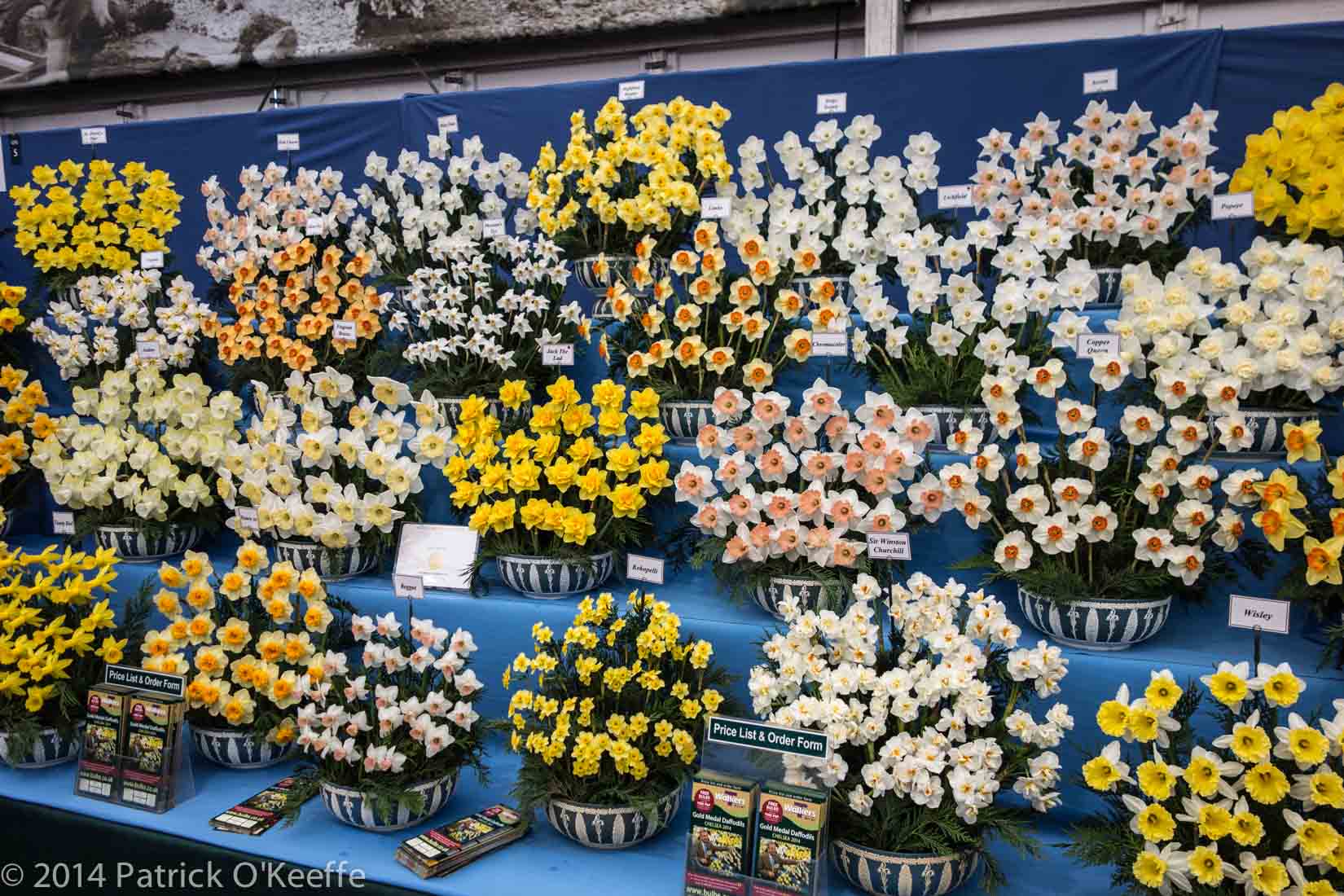
The RHS Hampton Court Palace Flower Show is the largest of it’s kind in the UK but the Chelsea Flower Show is the more prestigious. The show is the place where the future trends for gardens and new plants can be seen.
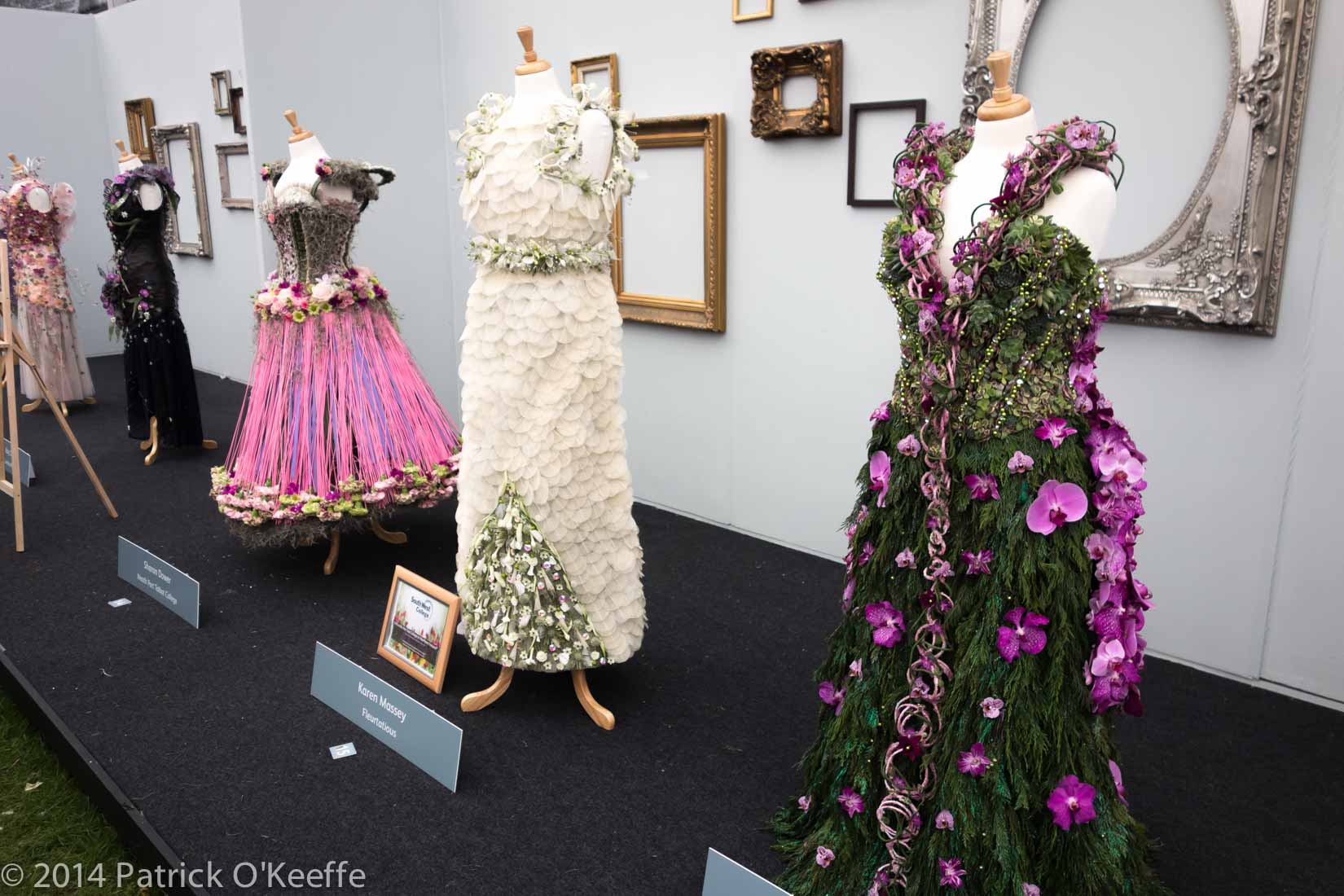
The Chelsea flower show is visited by around 157,000 visitors each year. The number of visitors is limited by the size of the garden in which it is held. Tickets must be purchased online in advance. Anyone planning to go should aim to arrive early as it fills up quickly and can become very crowded. An umbrella is an essential item to have, just to be safe in the english climate.
Gardening trendsetters display their numerous flower creations and garden fashions, hoping to win an award for their prize creations. Between the various Gardens the manufactures of tractors, lawn mowers, summer hats and gardening gloves have set up there stands. Hobby gardeners and London high Society take time out to visit the flower show and enjoy a glass of the English summer drink Pimm’s between bamboo, dragon figures, muscles and large cacti.
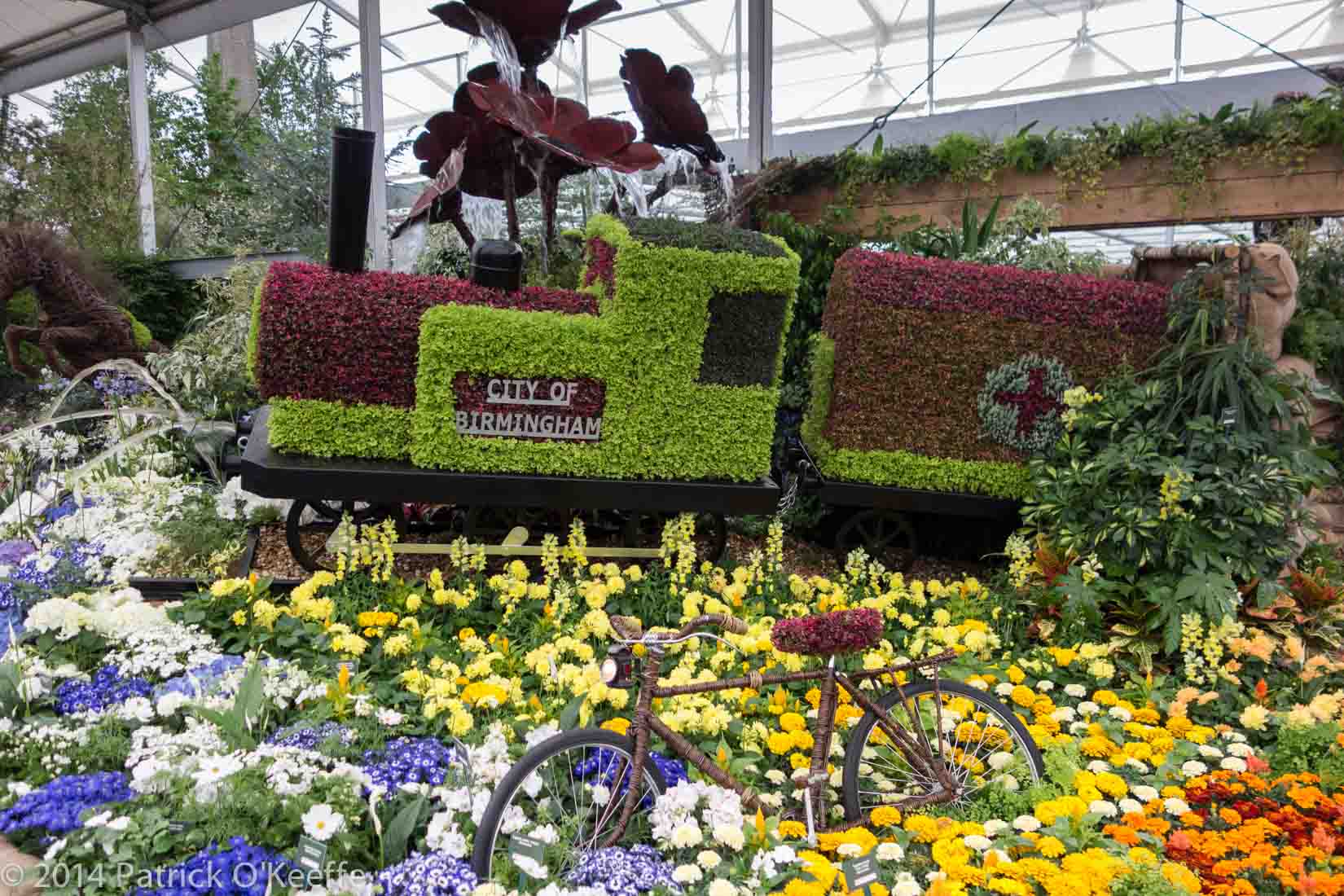
The displays both inside and outside the main marquee are outstanding. It is well worth the entry fee just to see the creativity of the arrangements and displays.
The specific gardens laid out by sponsors and designed by well known garden designers are of great interest to the visitors. Each garden is laid out with a specific theme in mind. The themes range from layouts with Italian influences through to waterscapes and even wine. Wine as a theme was demonstrated by the Cloudy Bay Garden. Here the tasting notes of their wines were reflected in the design of the garden. Using this as the basic concept, planting, flower colours, perfumes and textures are used to visualise these sensations.
Venice Simplon Orient Express
Patrick O'Keeffe
15 September, 2013
We recently travelled on the VSOE (Venice-Siplon-Orient-Express) from London to Venice. This was for me a trip down memory lane.
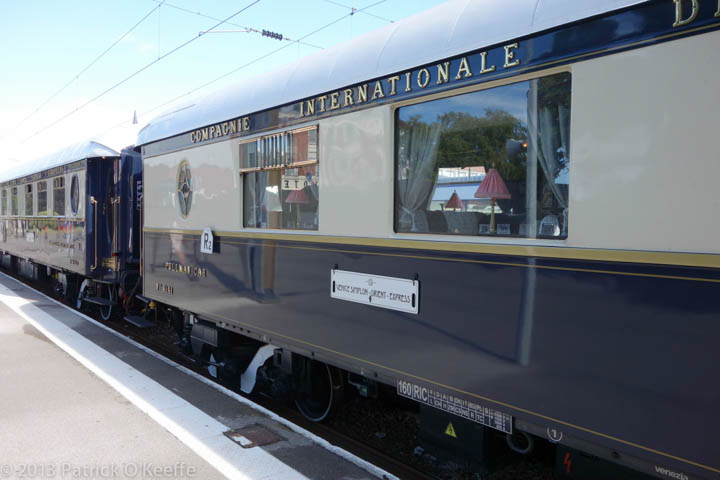
We recently travelled on the VSOE (Venice-Siplon-Orient-Express) from London to Venice. This was for me a trip down memory lane.
I was part of the original team responsible for the rebuilding of the train from 1980 to 1982. I was VSOE Site Manager for the rebuilding of the Restaurant, Bar, Pullaman, Service and 2 Sleeping Cars at the Bremer Waggonbau GmbH in Bremen, Germany.
I am proud to have been part of the team who rebuilt an icon that is still running after more than 30 years.
This is how the cars looked before we started the work. The image below was taken at sidings in Bremen, Germany in the summer of 1980. It shows two of the cars just after arrival in Bremen.
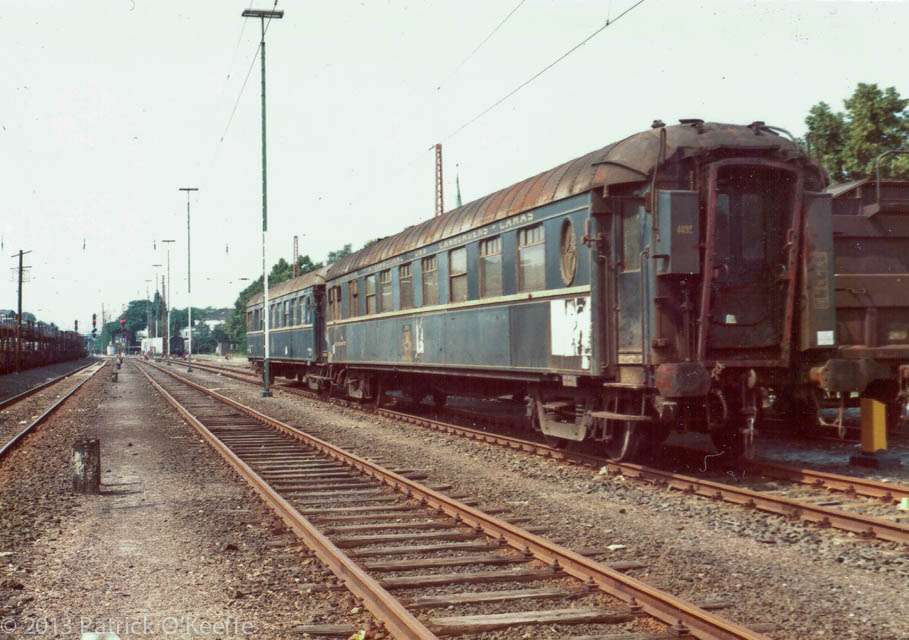
Bremer Waggonabu GmbH were selected to carry out the restoration work because of their many years of experience in building and the repair of specialised carriages such as panorama cars and restaurant cars.
At the same time as we commenced the restoration in Bremen work was also starting at the Compagnie Internationale des Wagons-Lits plant in Ostende-Slykens, Atéliers de WL in Belgium to restore a series of sleeping cars. The sleeping cars where also in much the same condition as the those which were to be rebuilt in Bremen.
The image below was also taken in the summer of 1980 at the Bremer Waggonbau GmbH site prior to work commencing on the restoration of the cars. As can be seen they were in a very poor state and we knew that we would face many challenges before we were able to complete the task.
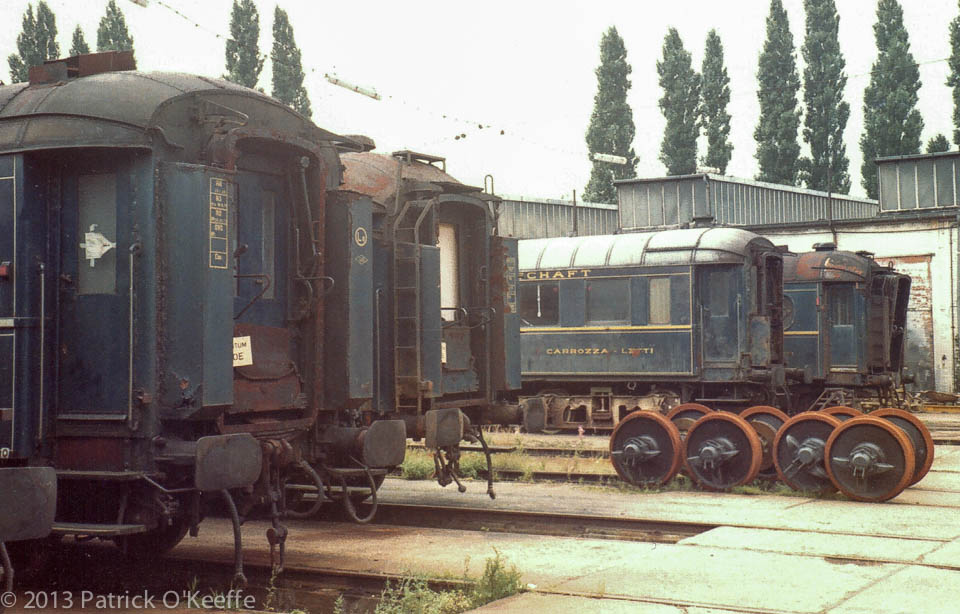
One of the challenge we faced was to find craftsmen with the required skills to complete the restoration work to the level of quality, workmanship and achieve the required technical standards as defined by the railway authorities.
Most of the rolling stock had been built in the 1920's and it was our goal to restore them to the same style of that era. We used, where at all possible, the same techniques, materials and design elements that had originally be used. This was one of the most challenging objectives but also the most rewarding. We started work on the restoration of the cars during the latter part of 1980 and the work was completed ready for the initial run on May 25, 1982. The VSOE is still running today.
The results of the restoration work can be seen in the following images which were taken in August 2013. Here is a partial view of the exterior of the Bar Car 3674.
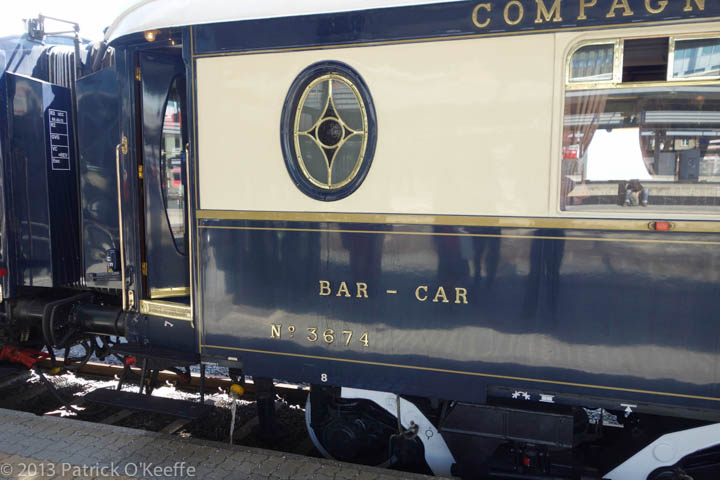
The image below is the emblem of Compagnie Internationale des Wagons-Lits which is on both sides of all the rolling stock. In the image above you can see part of the Name Compagnie Internationale des Wagons-Lits which is also written along the top of each side of the cars.
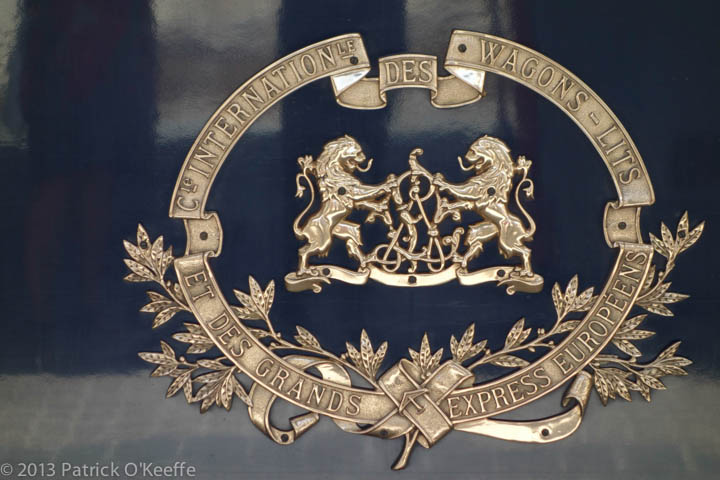
Here is a view of the interior of the Pullman Car Dining Car 4141 Côte d’Azur showing the Lalique designed panels. Some of the Lalique original panels were stolen from the Bremer Waggonbau GmbH site. Luckily we were able to have new panels manufactured. How ever they were not completed in-time for the start of the service. In there place wooden panels were placed until the new Lalique panels were ready.
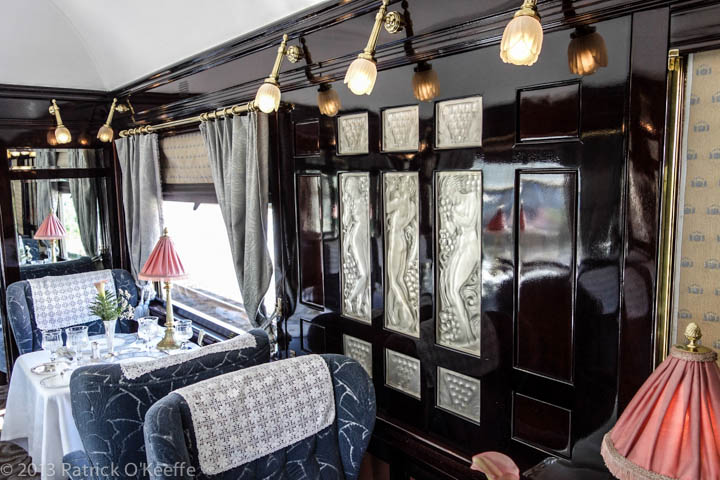
Below is an interior view of the of the Dining Car 4095 ‘L'Oriental' which was originally a Pullman kitchen car built in Birmingham in 1927 in the ‘Etoile du Nord’ style. When car 4095 was bought for the VSOE the interior was replaced with black lacquer panels that had been in dining car 3583.

Here is a view of the interior of Dining Car 4110 Etoile du Nord. The Dinning Car was built in 1926 in England by Birmingham Railway and Carriage and Wagon Co, Smethwick. It has probably the most beautiful marquetry in the continental train.
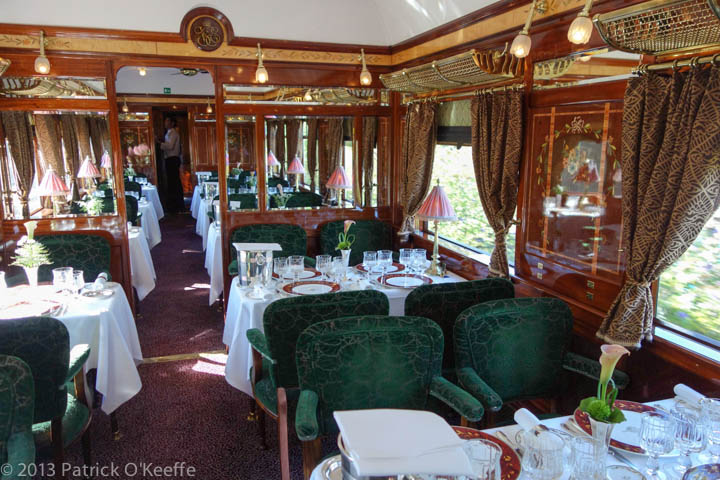
Here is a partial view of the exterior of the Bar Car 3674. This is the interior of the Bar Car 3674 which was designed by Gérard Gallet in the Art Nouveau style and manufactured by a furniture company in Bremen. As can be seen the VSOE cars are beautiful both inside and out.